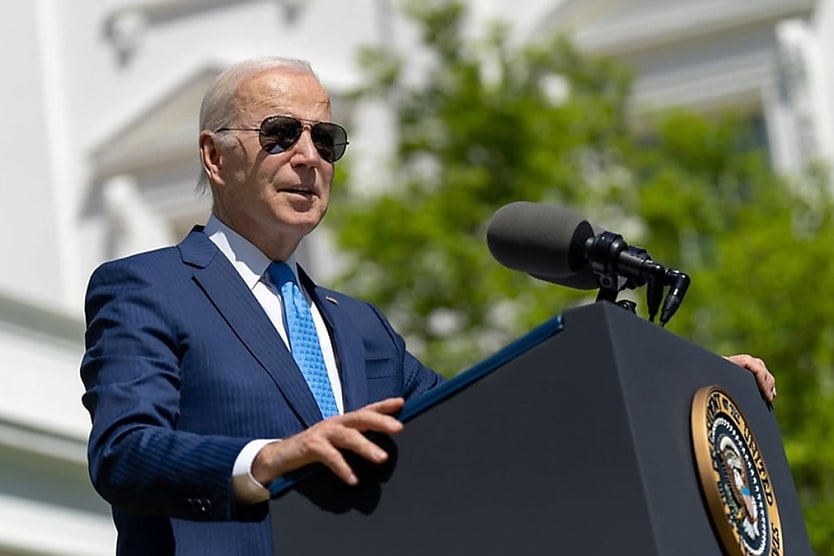Managing older employees 101
SHARE THIS ARTICLE

As workers look to prolong their working lives, employers need to consider how to manage the issues arising from employees of advanced age in thoughtful and sensitive ways, argues one law firm partner.
The age of US President Joe Biden has received intense scrutiny from pundits and voters alike in recent months and has only intensified in the wake of a widely panned performance at the first debate against former president (and Republican candidate) Donald Trump ahead of the November election.
Biden will be 82 at the commencement of his second term (if re-elected) and 86 at the end of it. Trump, in turn, is currently 78 and will be 82 by the time of the 2028 presidential election. Whoever wins, America is destined to have its eldest-ever commander-in-chief.
The discourse around Biden’s age and thus capacity to serve as president (a debate which has largely eluded Trump) gives rise, Michael Byrnes said, to broader questions for employers about employees of an advanced age.
This is pertinent not just against the backdrop of a hugely consequential presidential race in the US but also in the context of Australians having to work later in life because of various macro and microeconomic factors in the current climate.
Byrnes – a partner in employment law and workplace relations at Sydney-based law firm Swaab – wrote, in a recent blog on the firm’s website, that when it comes to the management of older employees, businesses and team leaders must be mindful of the Age Discrimination Act 2004 (Cth) (ADA), as well as the general protections provisions of the Fair Work Act 2009 (Cth) (FWA), that prohibit adverse action for a range of prohibited reasons.
This includes, he pointed out, age.
To this end, employers – and the HR professionals that serve them – need to steer clear of making erroneous, and potentially discriminatory, assumptions about the ability of an employee to work.
“Some employers erroneously believe that once an employee reaches the age of 67 (the age of eligibility for the age pension), they can then ‘retire’ that employee, and sometimes treat employees beyond that age as outstaying their welcome,” he said.
“Many employees are content, of course, to retire at the earliest opportunity. Other employees, for various personal, professional, and financial reasons, want to remain in employment into their late 60s, 70s and beyond.”
Should such assumptions be discarded, the matter then turns to the desire (or need) for some employees to continue working to an advanced age and, therefore, what an employer can do if the performance of that employee does start to decline.
The starting point, Byrnes advised in the blog post, is “this rather trite proposition: treat them the same as everyone else”.
“Rather than focusing on the age of the employee (reference to which should be assiduously avoided in discussions), the employer should objectively address the issues of performance that have arisen in the work performed by the employee, just as they would for any other employee,” he said.
“In short, identify the deficiencies in performance, provide guidance, support, and training to address any deficiencies and, where necessary, provide warnings and procedural fairness in the performance management process prior to any carefully considered decision to terminate employment.”
Byrnes further noted that both the ADA and FWA “essentially prohibit” employees being treated less favourably because of their age (notwithstanding routine and reasonable performance management processes).
Such performance management, he implored, should be reasonable and “relate to the inherent requirements of the position to avoid, among other things, the risk of indirect discrimination under the ADA”.
Elsewhere, if an employee develops a health condition that affects performance, then the provisions of the Disability Discrimination Act 1992 (Cth) (DDA) should be considered, he added.
“The issue may need to be managed as a function of disability rather than age. The DDA may require the employer to make reasonable adjustments,” Byrnes said.
If an employee has an extended period of service, “then, as a general proposition, it increases the risk the Fair Work Commission will find the termination to be ‘harsh’ in the event of unfair dismissal proceedings, given the impact that termination of employment will have on the employee”, Byrnes said.
“For an employee of advanced age, the termination of employment may prove to be career-ending.”
In addition, Byrnes wrote, employees of advanced age are required to comply with the same conduct standards as everyone else.
“Arguments relying upon generational differences to justify harassing or bullying conduct will be given short shrift by a court or tribunal,” he said.
“The antics of ‘Are You Being Served?’ are no longer the relevant standard.”
Ultimately, Byrnes concluded, as employees look to prolong their working lives, “employers need to consider how to manage the issues that can arise from employees of an advanced age thoughtfully and sensitively”.
And, of course, “age is just a number”.
RELATED TERMS
Ageism, often known as age discrimination, is the act of treating someone unjustly because of their age. In the workplace, this might manifest as a person being passed over for a job or promotion, older workers being denied benefits or early termination of employment.
According to the Australian Human Rights Commission, discrimination occurs when one individual or group of people is regarded less favourably than another because of their origins or certain personality traits. When a regulation or policy is unfairly applied to everyone yet disadvantages some persons due to a shared personal trait, that is also discrimination.
Jerome Doraisamy is the managing editor of Momentum Media’s professional services suite, encompassing Lawyers Weekly, HR Leader, Accountants Daily, and Accounting Times. He has worked as a journalist and podcast host at Momentum Media since February 2018. Jerome is also the author of The Wellness Doctrines book series, an admitted solicitor in NSW, and a board director of the Minds Count Foundation.

